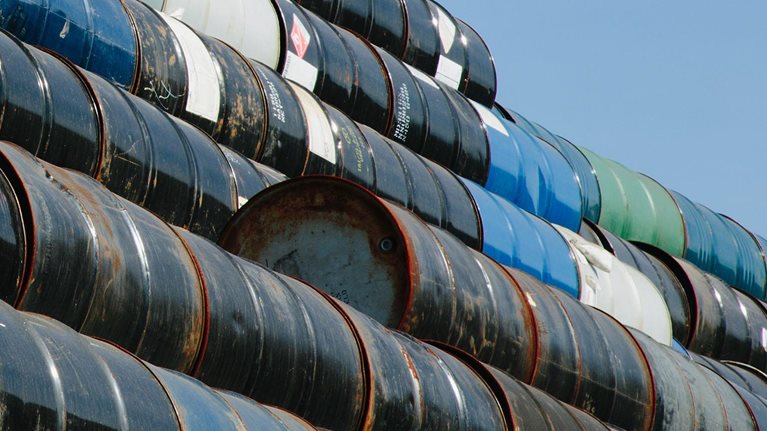Over the past several years, the global oil and gas industry has had to navigate very choppy waters; after a prolonged run of high and growing rig counts, mega-capital-expenditure projects, and plentiful capital to support investment, oil prices slid precipitously in 2014 and 2015. Within a matter of months, oil companies that had invested heavily based on rosy forecasts were slowing or even halting operations.
A recent price rebound has increased optimism slightly, and efforts are under way to contain costs by reducing head count, postponing projects, and cutting spending. Still, in the face of uncertain long-term forecasts, it is time to explore more drastic strategies to boost efficiency.
In response to recent technological advancements, oil executives should consider digital technologies with the potential to transform operations and create additional profits from existing capacity. Our research finds that the effective use of digital technologies in the oil and gas sector could reduce capital expenditures by up to 20 percent; it could cut operating costs in upstream by 3 to 5 percent and by about half that in downstream.
Oil and gas companies were pioneers of the first digital age in the 1980s and 1990s. Long before phrases such as big data, advanced analytics, and the Internet of Things became popular, oil executives were making use of 3-D seismic, linear program modeling of refineries, and advanced process control for operations. The use of such technologies unleashed new hydrocarbon resources and delivered operational efficiencies across the value chain.
Would you like to learn more about our Oil & Gas practice?
Thanks to the latest technological advancements, we are now poised for a second digital age that could further reduce costs, unleash unparalleled productivity, and boost performance significantly—if executives can harness the right technologies to support their business strategy. Making better use of existing technology can deliver serious returns: up to $1 billion in cost savings or production increases.1 Executives that make their organizations more digital will be well positioned to pursue new growth opportunities.
The oil and gas industry is tailor-made for this transformation: operations typically span multiple regions, with heavy capital investments and extended supply chains. The visibility and clarity delivered by digital technologies and advanced analytics can give executives unprecedented, granular views into operations, increase agility, and support better strategic decision making. Digital enablers, from process digitization to robotics and automation, can also help realize this potential by supporting processes in dynamic ways.
Many oil and gas companies are beginning to harness these enablers to drive better performance. To calculate the potential impact of digital technologies, McKinsey conducted research on more than 100 use cases at oil and gas companies and identified three categories for the application of digital technologies:

A billion-dollar digital opportunity for oil companies
- Operations of the future. While advanced analytics are being used to transform functions such as procurement and to support better decision making, the latest technologies, such as drones and equipment sensors, are also revolutionizing monitoring and maintenance. The potential impact of using advanced analytics for predictive maintenance is a decrease in maintenance costs of up to 13 percent. At one company, where maintenance costs accounted for 25 percent of operating expenses, this enabled preemptive equipment maintenance—in effect, vital equipment could be repaired before it broke down. This effort reduced costs by up to 27 percent while increasing reliability and uptime. Advanced analytics for energy and yield also has the potential to increase energy efficiency by as much as 10 percent.
- Reservoir limits. By integrating digital applications, companies have been able to increase their reservoir limits significantly, resulting in a decrease of up to 20 percent in upstream and downstream capital expenditures, in addition to ancillary benefits. Some companies have begun using 4-D seismic imaging to add a time-lapse dimension to traditional 3-D imaging, enabling them to measure and predict fluid changes in reservoirs. This enhanced view of reservoirs typically increases the recovery rate by as much as 40 percent, boosting upstream revenue by up to 5 percent.
- Digital-enabled marketing and distribution. Retailers in other industries have implemented digital technologies to gain a better understanding of consumer habits and preferences, optimize pricing models, and manage supply chains more efficiently. Oil companies are applying these same methods, with impressive results, potentially increasing revenue by up to 1.2 percent. By using geospatial analytics, for example, executives are increasing the efficiency of their supply and distribution networks through location planning and route optimization. Collectively, efforts in this category have lowered costs by up to 10 percent and increased revenue by 3 percent.
With the current oil and gas market, companies need to reinvent themselves to improve productivity. While capital expenditures or acquisitions might give executives pause, investing in digital technologies is a no-regrets move that could increase production from existing operations. Since these technologies are readily available and have proved their value in the form of reduced operating costs, increased efficiency, and revenue generation, oil companies should move quickly to embrace digital. It could be the difference between leading the next wave of industry innovation and being left behind.


